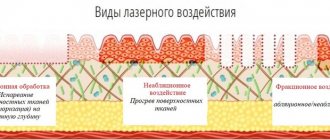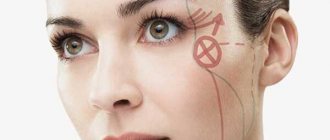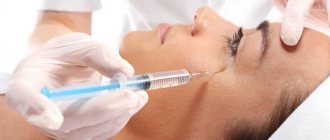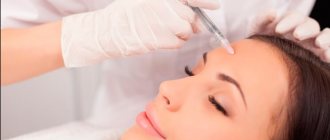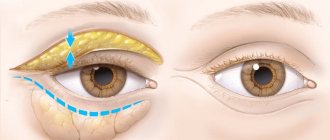Even gentle anti-aging procedures damage the skin, so swelling and bruising after biorevitalization are a common occurrence in cosmetology practice. Beauty injections, despite their safety and low trauma, often leave behind side effects.
When carrying out biorevitalization, cosmetologists make every effort to avoid the appearance of swelling, redness, papules and hematomas at the injection sites. However, this is not always possible: the result largely depends on the individual characteristics of the organism.
Why do hematomas appear, and how to get rid of them as soon as possible?
Price
| Surgeon consultation | 1 000,00 |
| Consultation with a cosmetologist + ultrasound | 3 000,00 |
| Magnetic laser therapy | 900,00 |
| Microcurrent therapy | 1 800,00 |
| Revixan | 4 500,00 |
| Removal of hyaluronic acid fillers using enzymes (Longidase) | 4 500,00 |
| Plasma therapy | 5 400,00 |
| Needle RF | |
| Laser resurfacing |
Biorevitalization and mesotherapy are low-traumatic procedures that have a minimum of contraindications. The injection cocktails used during the procedures include drugs that are similar to substances produced by the human body. Therefore, these drugs extremely rarely cause negative reactions. However, some people may still have individual intolerance to the components of the drug or anesthesia.
Side effects of injection procedures can manifest themselves in the form of swelling, bruising, bruising, redness or inflammation at the puncture site. And if the procedure technique is violated or the wrong dosage of the drug is chosen, more serious complications of mesotherapy or biorevitalization may occur.
The whole truth about side effects after contouring
Injection methods of rejuvenation are gaining more and more popularity every year. Innovative lines of fillers are being produced, new procedures are being introduced, which increases the effectiveness of contouring. Of course, side effects are possible. However, they happen extremely rarely or are temporary.
However, most cosmetology centers are silent about unpleasant consequences. Such situations frighten clients, because they were not warned and are afraid of any unwanted manifestations.
Let's look at the possible side effects of contouring and find out the whole truth about them:
- What should women be prepared for after the session?
- Is it possible to prevent their occurrence?
- What to do if they arise?
Side effects of contouring
According to statistics, unpleasant consequences from rejuvenation procedures are recorded in less than 5% of cases. The likelihood of their occurrence, although small, is still there and you need to be prepared for it.
List of possible side effects after contouring :
- Strong pain. Fillers are injected. Piercing the skin with a needle is an unpleasant process, especially in delicate areas - the lips. Advanced modern drugs include the local anesthetic lidocaine. Pain sensations are reduced by 50% or more, but in some women sensitivity is increased and such manipulations are accompanied by discomfort.
- Hematomas (bruises). All facial tissues are penetrated by small capillaries and nerve endings. When the needle is inserted, they are touched and injured. This is where bruises occur. They dissolve on their own.
- Edema . This is a normal reaction of the body to the injection of filler under the skin. The drug attracts fluid from neighboring tissues. After a few days, the swelling subsides and only the desired volume remains, for which the cocktail was introduced.
- Inflammation . Occurs when sanitary standards are not observed. In modern aesthetic medicine, such cases are very rare. However, if you turn to an incompetent doctor or even go to do the procedure at home, then the risks of inflammation increase several times.
- Allergic reaction. This is an inadequate immune response to the injected filler in case of individual intolerance to the drug. This point is completely dependent on the characteristics of the body.
- Consolidation or migration of filler . The gel may bulge, forming globules, bumps, and lumps. This situation is typical when the filler is injected very superficially or too deeply. This is often a mistake made by an inexperienced cosmetologist. This may also be due to the anatomical features of the face: in mature women, voids form under the skin with age. This is where the filler migrates. Movement of the gel is noted when rubbing or massaging the injection site in the first few days after the session.
- Vascular trauma or embolism. No specialist is immune from this. Similar problems are typical for areas with abundant blood supply - the nasolabial triangle. We are not talking about capillaries, but about larger units - arteries and veins. If you inject too much filler near a vessel, the gel will crush it. The passage of blood becomes difficult and tissue ischemia (oxygen starvation) occurs. If the drug gets directly into the lumen of the vessel, it becomes clogged. In the absence of medical accommodation, necrosis may develop.
Help and prevention for side effects after contouring
Severe pain can be suppressed using fillers that contain lidocaine. It is not recommended to touch the puncture site and try to somehow “stretch” the gel. This will only increase tissue trauma and increase discomfort. If the pain is excessively intense, you should consult a doctor. Perhaps this is an individual feature - high sensitivity and it will be enough to take a painkiller, or maybe this is a more serious complication.
Hematomas and swelling go away on their own if you follow all the doctor’s recommendations for skin care after contouring. These side effects cannot be prevented. The cosmetologist will advise you on the necessary creams or ointments, and will also advise you on the rules of the recovery period.
Inflammatory processes at injection sites begin when sterility is violated during the procedure. A professional will not make such mistakes, which once again proves the prestige of cosmetology centers. It is not recommended to contact doctors at home or even turn to “self-taught” doctors. If inflammation occurs in the area of the needle puncture, you should immediately consult a doctor. The solution often requires surgery.
No one is protected from allergies Hyaluronic acid is a substance produced by the human body, so its rejection is impossible. But the anesthetic lidocaine, which is part of the fillers, can activate the immune system and cause an inadequate reaction. Before performing contour plastic surgery, the specialist carefully interviews the client and finds out the possibility of allergies. If the reaction has already begun, the doctor will provide the necessary assistance and advise on further tactics.
Compaction and migration of filler can only be eliminated with an additional session. The drug hyaluronidase is injected. Roughly speaking, this is a “cancellation” procedure. The substance destroys and removes previously incorrectly administered hyaluronic acid from the body. If we are talking about a filler on a different basis (collagen, Radiesse), then you will need to wait several months until it resolves on its own. To avoid a similar negative experience, you must carefully search for a professional cosmetologist.
If a large vessel was damaged during contouring , the specialist will provide you with the necessary assistance and advise on further care of the intervention area. If you experience sharp pain, intense redness, a burning sensation or other discomfort, you should contact your cosmetologist. Perhaps this is just excessive sensitivity or a hematoma, or maybe a sign of tissue ischemia when the vessel is compressed. You should not wait and be patient, because this can lead to necrosis or infection of the puncture site. Damage or compression of the vessel cannot be prevented.
Possible consequences:
- Itching and redness. As a rule, this is a temporary phenomenon caused by the individual skin reaction to injections and damage. Most often, redness and itching go away on their own within two days. However, if your face itches or the redness persists longer, you should consult a doctor.
- Peeling of the skin. As in the first case, this may be a short-term reaction of the body to the injection. As a result of the procedure, new cells appear and old ones die. When this process is completed, the skin will no longer peel.
- Microhematomas, which usually go away on their own after a few days.
- Unpleasant sensations (tightness, heat). Some patients feel their face burning after injections. Usually we are talking about the body’s natural reaction to the puncture, which should go away naturally during the day. If a feeling of tightness occurs, you must follow the care recommendations of your cosmetologist.
How to remove bruises that appear after injections?
To prevent bruises, before a course of injections, it is advisable to drink vitamins A and C - they strengthen the walls of blood vessels. There is no need to sit or lie down immediately after the injection; it is better to walk around for a while so that the medicine dissipates faster.
If bruises do appear, consult your doctor about how to quickly get rid of them. You can independently alleviate the condition and get rid of hematomas using folk remedies.
- an iodine mesh is applied to the injection site until the bruise completely disappears;
- light massage accelerates the resorption of hematomas;
- a cabbage leaf compress with honey is applied to the injection site and left overnight;
- a cake made from green clay, water and salt, which is applied to the inflamed area at night.
Regular pharmacy ointments will help get rid of bruises. But you shouldn’t use all the remedies at once; choose one recipe.
In the treatment of some diseases, injections of drugs cannot be avoided. However, in some cases, very unpleasant consequences appear after such treatment - bruises on the buttocks. Most often this is the effect of rapid administration of the drug. Bruises and bumps can appear from a single injection or as a result of multiple intramuscular manipulations.
Biorevitalization: consequences and complications
Injection procedures may be accompanied not only by the temporary effects that we discussed above, but also by more serious side effects that require qualified medical attention. In these cases, you should not self-medicate. Otherwise, the negative consequences of the procedures may intensify and lead to even more serious complications.
Allergy
Some people have an allergic reaction to the anesthesia, the drug, or even the material the needle is made of. Allergies after biorevitalization or mesotherapy can manifest themselves in different forms. This may be allergic dermatitis, accompanied by persistent redness and sometimes blistering rashes.
When exposed to an allergen, a local anaphylactic reaction with itching, blisters and swelling may also develop. In rare situations, there may be anaphylactic shock, Quincke's edema and urticaria. In any case, if an allergy occurs, the help of a qualified doctor is necessary.
Inflammation and infections
Complications after biorevitalization or mesotherapy in the form of infection can occur if antiseptic standards are not observed during the procedure or if skin care is improper. As a result of the inflammatory process, the patient may develop small, painless nodules under the skin.
In case of inflammation and infection, you must immediately contact a specialist to avoid more serious consequences.
Skin depigmentation
This side effect is rarely encountered in practice. And the main reason is a violation of the technique of the procedure. Thus, if a filler gets into a vessel, the patient may experience quite severe pain, and the risk of subsequent skin depigmentation increases significantly.
Nodules and other structures under the skin
Sometimes there are quite serious consequences of mesotherapy: persistent lumps under the skin, prolonged redness, necrosis (death of an area) of the skin.
The causes of such complications may be inflammation against the background of an associated infection, impaired blood supply due to damage to a vessel, or ignoring serious contraindications to a cosmetic procedure.
In the absence of timely help, these consequences will not pass without a trace, and a person will remain with unesthetic skin defects for the rest of his life. Therefore, if you notice such consequences after biorevitalization or mesotherapy, immediately consult a doctor. This requires competent diagnosis and treatment, and sometimes surgical intervention.
Tips from cosmetologists for getting rid of bruises
Cosmetologists who are closely familiar with this procedure are best versed in how to get rid of bruises and swelling after biorevitalization. The most important advice for the future is to carefully choose a specialist! Pay attention not only to his work experience and qualifications, but also to personal recommendations and reviews of the master. After receiving this information, the risk of running into an unprofessional is much lower.
If hematomas have already been obtained, cosmetologists offer 10 excellent tips that can help you get rid of them as quickly as possible:
- Apply cooling compresses to your face. 3-4 times a day will be enough.
- Use the Darsonval apparatus: its effect helps reduce hematomas and get rid of them as soon as possible.
- Try not to touch your face with your hands or foreign objects.
- Do not wash your face for the next 3 days after the procedure, so as not to further injure the skin. To cleanse your face, wipe it with a cotton pad soaked in chlorhexidine.
- Try not to use active facial expressions for the first couple of days. Smiles and laughter are great, but they make the bruises worse.
- Do not exercise for at least a week after the procedure. Avoid strenuous physical activity that will cause you to sweat.
- Don't sleep in a horizontal position. Use high pillows to raise your face above body level. This will help the hematomas resolve faster.
- Don't overheat. Not only baths and saunas are prohibited, but also hot baths and showers.
- Don't drink alcohol for the next week. This will slow down the healing of bruises.
- Use ointments only for severe hematomas. Do not touch small bruises; they will resolve on their own very quickly. To disguise, you can use foundation and powder, the main thing is to apply them very carefully and carefully.
A cosmetologist will give some tips on how to remove bruises after biorevitalization:
Apply these tips, use traditional methods, do not violate the instructions after the procedure, and the result will not be long in coming. Bruises and swelling are an unpleasant phenomenon, but they will disappear very soon, and you will be able to appreciate the effect of biorevitalization.
Correction of complications
To avoid complications, never try to eliminate side effects after cosmetic procedures on your own. Only a specialist can correct negative consequences. At the same time, it is important that he has sufficient qualifications and experience, because your health and beauty depend on this.
Our clinic has a specialized department for dealing with complications after cosmetic procedures. The consultations are conducted by the best doctors of the clinic with many years of experience.
How to remove bruises at home?
Of course, in this not the most pleasant and aesthetic situation, the question arises - how to remove bruises after lip augmentation? After all, every woman wants to enjoy the sight of beautiful lips, and not look at blue spots in the mirror.
Getting rid of bruises at home is not the most time-consuming process. The unpleasant consequences of a cosmetic procedure will disappear as quickly as possible if you follow a few simple recommendations:
Immediately after the procedure, you need to press your finger on your lips and fix it in this position for several minutes. This technique will help stop the spread of blood from damaged vessels. This is the only time when force can be applied to the lip area. In the future, mechanical impacts on this area should be avoided. It is acceptable to apply ice to the surface of the lips. The ice cube is first wrapped in a sterile napkin (the cold should not be scalding) and passed over the skin of the lips several times. You should not put pressure on the cube; movements should be light and smooth. This effect of cold promotes blood resorption, vasoconstriction, and pain relief. This procedure must be performed several times a day. It is not recommended to take a horizontal body position in the first 8 hours after the procedure. Otherwise, a rush of blood to the lips may occur, which will cause even greater vascular injury. In order for hematomas to resolve faster after lip augmentation, you need to sleep on a high pillow for the first days. Avoid exposure to high temperatures. Taking hot baths, sunbathing on the beach, visiting the bathhouse, sauna and solarium will have to be postponed until the bruises have completely healed. It is necessary to use special healing gels and ointments. Most often, bruises on the lips after enlargement are smeared with Heparin ointment, Troxevasin and Hepatrombin. Before using such products, you need to consult a cosmetologist - he will help you choose the best option for the treatment. Sports activities will have to be postponed, at least for a while
Physical activity accelerates blood circulation, which, in turn, interferes with the complete absorption of fluid in soft tissues. After the lip augmentation procedure, you need to pay close attention to your diet. So, the menu should include foods rich in vitamin K and ascorbic acid.
They are found in large quantities in broccoli, avocados, oranges, black currants, and walnuts. Such treats strengthen blood vessels and allow blood to clot faster.
When dealing with bruises, all means are good. So, medicinal plants and berries will help eliminate swelling. It is permissible to use the following natural medicines:
- Kalina. Strengthens the tone of blood vessels and skin, which means it will cope wonderfully with the problem of bruises and swelling. A lip mask made from viburnum, ground with honey, would be an excellent healing remedy.
- Aloe. A plant leaf is applied to the damaged areas for 20 minutes three times a day.
- Potato starch. It is mixed with mineral water to a paste. The mixture is applied to problem areas every two hours, leaving for 30 minutes for the first few days after the procedure.
- Sagebrush. A compress made from a solution of wormwood can also help damaged skin. Pour 3 teaspoons of the plant into a glass of boiling water and leave for 20 minutes. After cooling, soak a cotton pad in the solution and apply it to your lips. Repeat the procedure several times a day.
Precautionary measures
Unfortunately, the formation of swelling and bruising is a common occurrence in cosmetology. But you can reduce the risk of their occurrence by choosing an experienced specialist. A professional always collects a detailed medical history of the patient before introducing filler and “tests” the correction area with small volumes of the drug: 0.2-0.5 ml.
After the procedure, the patient must follow all recommendations for caring for the injured area. Otherwise, even after a high-quality filler injection, there is a risk of complications and, as a result, unforeseen results.
General information
The main cause of hematomas are bruises - closed injuries to soft tissues resulting from a blow or fall. A strong blow leads to rupture of the walls of small blood vessels, due to which blood begins to flow through the breakout sites into the subcutaneous tissue, soft tissues or body cavities. Hematomas form in different parts of the body - on the limbs, torso and even on the head. In addition to bruises, hematomas are caused by intense compression and stretching of tissues due to dislocations or fractures.
Small lesions, as a rule, do not require any treatment and resolve on their own within a few days. When large hematomas form, there is a risk of infection and the development of suppuration. Most often, hematomas form in representatives of younger age groups - children, adolescents and young people, who are characterized by high physical activity. Another “risk group” are people with increased fragility of the vascular wall, as well as with blood clotting disorders.
Solutions to the problem
Some patients prefer not to take any measures to eliminate swelling and are willing to wait a couple of days until such disorders disappear naturally.
At the client’s request, a master cosmetologist or dermatologist
can prescribe special decongestants that accelerate the normalization of the skin condition.
You can use one of the following to speed up the healing process on your own:
- Homeopathic arnica . This product is based on natural ingredients (mumiyo, chestnut, plantain and arnica extracts). It not only relieves swelling, but also eliminates pain that sometimes occurs after the procedure. To do this, after biorevitalization, the product is applied twice a day until the swelling goes away.
- Lymphomyosot. A natural remedy in the form of an oral solution, which includes potent components and can cause additional inflammation if you are intolerant to such substances. This drug should be taken within ten days after biorevitalization. Reception is carried out three times a day. The product is not used in its pure form, but is diluted with purified water at the rate of 15 drops per half glass of water.
Remember! If the use of such funds is impossible for some reason, but the swelling takes longer than the prescribed three days, you can speed up the process simply by refusing to take certain actions.
In particular, during the entire rehabilitation period you cannot use decorative cosmetics and moisturizers .
Types of damage
The faster a hematoma forms, the more difficult the recovery. Injuries of this type are divided into:
- lungs that develop within a day, accompanied by mild pain and not requiring special treatment;
- moderate severity, the appearance of which requires no more than 5-6 hours, accompanied by noticeable swelling and pain, worsening the motor function of the limb;
- severe, forming within 2 hours after a bruise, accompanied by dysfunction of the limb, acute pain and noticeable swelling.
Treatment of moderate and severe hematomas should be carried out under the supervision of a physician to eliminate possible negative consequences of injury.
In addition to the severity of the damage, there are other criteria for classifying hematomas:
- by depth of location - under the skin, under the mucous membrane, deep in the muscle tissue, under the fascia, etc.;
- according to the state of spilled blood - uncoagulated (fresh), coagulated and lysed (filled with old blood that is not capable of clotting);
- by the nature of blood distribution - diffuse (blood permeates the tissue and spreads quickly), cavitary (blood accumulates in the cavity between the tissues) and encysted (over time, the cavity filled with blood is surrounded by a “bag” of connective tissue);
- according to the condition of the vessel - pulsating (blood flows freely from the vessel and flows back) and non-pulsating (the rupture of the vessel is quickly sealed by a thrombus).
Almost always, hemorrhage poses a health hazard, so to eliminate its consequences, you need to seek medical help immediately after the injury.
Benefits of biorevitalization
- Improves skin structure.
- Stimulates the synthesis of endogenous collagen and elastin.
- Improves the appearance of the skin, making it more elastic and hydrated.
- Eliminates fine wrinkles.
- It has no absolute contraindications.
- Eliminates dark circles under the eyes.
- It has a very small number of side effects, and all of them are temporary.
The result can be assessed immediately, already at the time of the procedure. But it has a cumulative effect and reaches a maximum towards the end of the course of procedures.
How is biorevitalization of the area around the eyes carried out?
The first step is a consultation with a cosmetologist - a skin examination is performed, indications and contraindications for the procedure are identified, and the possibility of achieving the desired result is discussed. Based on this data, the doctor chooses the drug he will use.
We use several lines of drugs that differ in the concentration of HA, the degree of its purification, the size of the molecule, the presence of biologically active additives, etc. Since the skin in the periorbital area is very delicate and the subcutaneous tissue is minimally expressed, the choice is given to drugs based on low molecular weight hyaluronic acid, since high molecular weight absorbs water more strongly, which can lead to swelling and the effect of swollen eyes.
The procedure itself is carried out as follows:
- The skin in the eye area is cleansed.
- The doctor applies an anesthetic cream to the treatment area.
- In some cases, while the anesthetic begins to take effect, marks may be placed on the skin for the injection.
- Next, the skin is disinfected to prevent the development of infectious complications.
- The next stage is injections. They can be performed using various techniques. In the periorbital region, papular and linear are most often used. After administration, the drug is evenly distributed in the skin tissues with light massage movements.
- At the end, the skin is once again treated with an antiseptic.
How does biorevitalization work?
In order for the skin to remain young and be able to resist the aging process, it is necessary that it be hydrated, i.e. have the necessary supply of fluid.
In the human body, the ability of tissues to retain water molecules is determined by the content of hyaluronic acid in them. It is capable of attracting and holding water in a volume exceeding its own weight. If skin cells are sufficiently hydrated, they can renew themselves in a timely manner and adequately withstand the adverse effects of the environment. If the amount of hyaluronic acid is not enough, the skin becomes flabby, dull, and fine wrinkles appear on it.
Biorevitalization not only replenishes the deficiency of hyaluronic acid through injection of the drug, but also stimulates its production by the body itself, thereby strengthening the skin’s protective mechanisms by replenishing its own resources.


